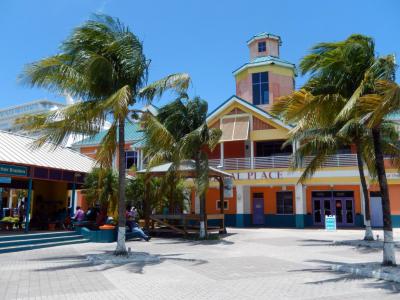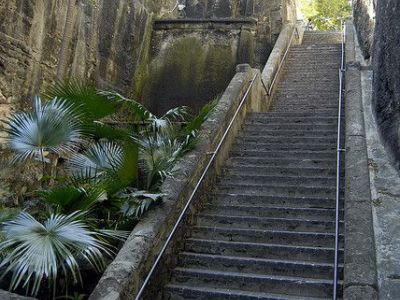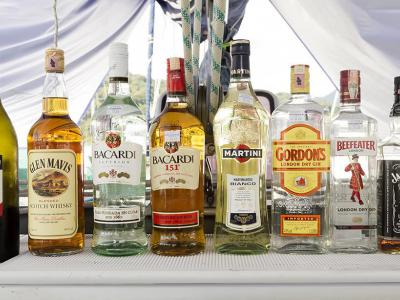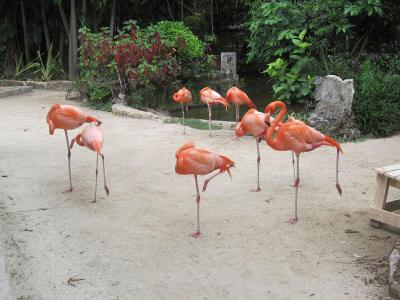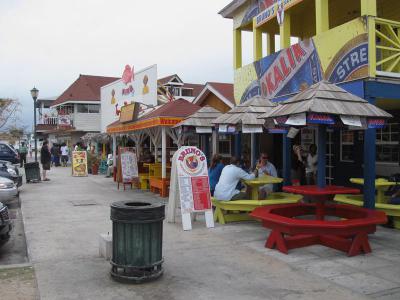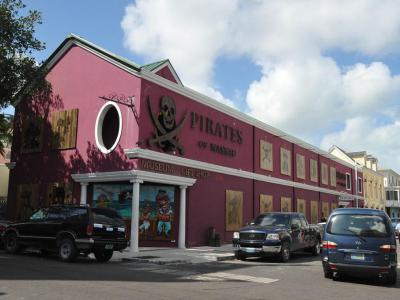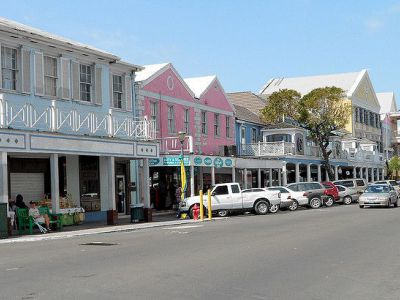Custom Walk in Nassau, Bahamas by denevan1984_def7c created on 2025-03-20
Guide Location: Bahamas » Nassau
Guide Type: Custom Walk
# of Sights: 8
Tour Duration: 3 Hour(s)
Travel Distance: 7.5 Km or 4.7 Miles
Share Key: X7TAM
Guide Type: Custom Walk
# of Sights: 8
Tour Duration: 3 Hour(s)
Travel Distance: 7.5 Km or 4.7 Miles
Share Key: X7TAM
How It Works
Please retrieve this walk in the GPSmyCity app. Once done, the app will guide you from one tour stop to the next as if you had a personal tour guide. If you created the walk on this website or come to the page via a link, please follow the instructions below to retrieve the walk in the app.
Retrieve This Walk in App
Step 1. Download the app "GPSmyCity: Walks in 1K+ Cities" on Apple App Store or Google Play Store.
Step 2. In the GPSmyCity app, download(or launch) the guide "Nassau Map and Walking Tours".
Step 3. Tap the menu button located at upper right corner of the "Walks" screen and select "Retrieve custom walk". Enter the share key: X7TAM
1) Prince George Wharf
Prince George Wharf is the largest cruise port in The Bahamas. It's the place to see massive cruise liners load and unload passengers. More than a million passengers arrive at Prince George Wharf every year.
Cruise ship passengers come and go through Festival Place, which is a great place to shop for resort wear and souvenirs. Festival Place is a bright and colorful area that features over 45 artisan and seller stalls. You'll find traditional crafts such as hand-crafted straw bags, textiles, and paintings.
Prince George Wharf is a great place to arrange tourist attractions such as horse-drawn carriage rides, scooter rentals, boat excursions, and hair-braiding. Visitors can also check out live Bahamian music on Tuesdays, Fridays, and Saturdays.
The adjacent Woodes Rogers Walk offers a great viewpoint of the historic wharf.
Cruise ship passengers come and go through Festival Place, which is a great place to shop for resort wear and souvenirs. Festival Place is a bright and colorful area that features over 45 artisan and seller stalls. You'll find traditional crafts such as hand-crafted straw bags, textiles, and paintings.
Prince George Wharf is a great place to arrange tourist attractions such as horse-drawn carriage rides, scooter rentals, boat excursions, and hair-braiding. Visitors can also check out live Bahamian music on Tuesdays, Fridays, and Saturdays.
The adjacent Woodes Rogers Walk offers a great viewpoint of the historic wharf.
2) Queen's Staircase (must see)
The Queen's Staircase is known as the 66 steps and is one of Nassau's most visited attractions. The staircase was cut from limestone and completed in 1794. The staircase provides a direct route to Fort Fincastle on Bennet's Hill.
When the staircase and fort were built, The Bahamas feared invasions by other European nations who wanted to control the Caribbean. As a result, the British built several forts to defend the country against European attackers and pirates. These forts include Fort Fincastle, Fort Montagu, and Fort Charlotte. Fort Fincastle is the highest of the three forts, and residents wanted a direct access route to and from the fort in case of an attack.
Six hundred slaves worked for over 16 years to complete the staircase. The enslaved people used hand tools to cut through solid limestone.
In the 1800s, the staircase was renamed after Queen Victoria, who ruled Britain from 1837 to 1901.
The Queen's Staircase has a beautiful water feature that cascades next to the staircase to a pool at the bottom of the stairs. The staircase is surrounded by a peaceful garden area with high stone walls and lush foliage.
Today, the staircase is still used to access Fort Fincastle. The garden setting makes it a wonderful place to visit during the day or night. Residents and visitors can enjoy the peaceful grotto in the middle of bustling Nassau.
When the staircase and fort were built, The Bahamas feared invasions by other European nations who wanted to control the Caribbean. As a result, the British built several forts to defend the country against European attackers and pirates. These forts include Fort Fincastle, Fort Montagu, and Fort Charlotte. Fort Fincastle is the highest of the three forts, and residents wanted a direct access route to and from the fort in case of an attack.
Six hundred slaves worked for over 16 years to complete the staircase. The enslaved people used hand tools to cut through solid limestone.
In the 1800s, the staircase was renamed after Queen Victoria, who ruled Britain from 1837 to 1901.
The Queen's Staircase has a beautiful water feature that cascades next to the staircase to a pool at the bottom of the stairs. The staircase is surrounded by a peaceful garden area with high stone walls and lush foliage.
Today, the staircase is still used to access Fort Fincastle. The garden setting makes it a wonderful place to visit during the day or night. Residents and visitors can enjoy the peaceful grotto in the middle of bustling Nassau.
3) Fort Fincastle (must see)
Fort Fincastle was built with cut limestone in 1793. Its location on top of Bennet's Hill was chosen as the best strategic location to protect Nassau and the harbor from attacks. Governor John Murray, also known as Lord Dunmore and Viscount Fincastle, was in charge of the fort's construction. Visitors can access the fort by climbing the historic Queen's Staircase.
Fort Fincastle was built in the shape of a paddle-wheel steamer. The fort had a 68 cannon capacity but never fired a single shot. The fort also served as a lighthouse until 1817, when the Paradise Island lighthouse was built.
Bennet's Hill is the highest point on the island, and the fort offers fabulous views of historic Nassau, Paradise Island, and the harbor. Visitors can also read several information signs to learn more about the fort's history.
Fort Fincastle was built in the shape of a paddle-wheel steamer. The fort had a 68 cannon capacity but never fired a single shot. The fort also served as a lighthouse until 1817, when the Paradise Island lighthouse was built.
Bennet's Hill is the highest point on the island, and the fort offers fabulous views of historic Nassau, Paradise Island, and the harbor. Visitors can also read several information signs to learn more about the fort's history.
4) John Watling’s Distillery
John Watling's Distillery is located on the Buena Vista Estate, which was founded in 1789. The distillery is named after John Watling, a pirate captain who sailed Bahamian waters. John Watling was known as "the gentleman pirate" who observed the Sabbath and threw out gaming boards.
Buena Vista Estate overlooks Nassau harbor and has two acres of landscaped grounds. The beautiful estate features more than 300 years of antiques and prints that showcase the area's history and culture. Visitors will also find a well carved from limestone over 200 years ago.
The distillery has over 1,000 white oak barrels. Guests can tour the estate and watch the rums being bottled by hand. Guests can also taste the various liquors, which are known as the Spirit of The Bahamas. Try the Amber, Pale, or Beuna Vista Rum. The Red Turtle Vodka is filtered with Eleuthera's pink sands, and the Gin is infused with botanicals from Andros.
The on-site Red Turtle Tavern offers special hand-crafted Bahamian cocktails.
Buena Vista Estate overlooks Nassau harbor and has two acres of landscaped grounds. The beautiful estate features more than 300 years of antiques and prints that showcase the area's history and culture. Visitors will also find a well carved from limestone over 200 years ago.
The distillery has over 1,000 white oak barrels. Guests can tour the estate and watch the rums being bottled by hand. Guests can also taste the various liquors, which are known as the Spirit of The Bahamas. Try the Amber, Pale, or Beuna Vista Rum. The Red Turtle Vodka is filtered with Eleuthera's pink sands, and the Gin is infused with botanicals from Andros.
The on-site Red Turtle Tavern offers special hand-crafted Bahamian cocktails.
5) Ardastra Gardens and Zoo
Spread over more than four acres, Ardastra Gardens, Zoo and Conservation Centre houses a plethora of animal species, including the national bird of the Bahamas, the Caribbean flamingo.
The gardens were initially designed by the renowned Jamaican horticulturalist Hedley Edwards in 1937, who named the gardens Ardastra, which means “striving towards the stars” in Latin. Edwards intended to create a tranquil nature preserve that would depict a ‘utopia of peace, beauty and tranquillity’.
Over time, Ardastra Gardens became home to the endangered Caribbean flamingos, brought in from the island of Inagua in the 1950s. Edwards developed a successful breeding program for these birds, which were eventually trained to perform for visitors. Today, the flamingos continue to be one of the main attractions of Ardastra Gardens, and are fondly referred to as “Ballerinas in Pink” by National Geographic.
In 1980, the gardens were acquired by Norman Solomon, who was passionate about wildlife and conservation education. Solomon added more animals to the gardens and created a boutique zoo, which today houses over 135 animal species. Visitors can expect to see a variety of animals, including parrots, peacocks, lemurs, monkeys, reptiles, and even a pygmy hippopotamus.
Aside from the animals, Ardastra Gardens is also famous for its tranquil and restorative gardens. Visitors can wander through the lush tropical gardens, admire the beautiful flowers and plants, and take in the serene ambiance of the place.
Ardastra Gardens is not just a tourist attraction but also a conservation center that works toward the protection and preservation of local wildlife. The center relies heavily on philanthropic support from the public to meet its operating costs and fulfill its educational and conserving missions.
The gardens were initially designed by the renowned Jamaican horticulturalist Hedley Edwards in 1937, who named the gardens Ardastra, which means “striving towards the stars” in Latin. Edwards intended to create a tranquil nature preserve that would depict a ‘utopia of peace, beauty and tranquillity’.
Over time, Ardastra Gardens became home to the endangered Caribbean flamingos, brought in from the island of Inagua in the 1950s. Edwards developed a successful breeding program for these birds, which were eventually trained to perform for visitors. Today, the flamingos continue to be one of the main attractions of Ardastra Gardens, and are fondly referred to as “Ballerinas in Pink” by National Geographic.
In 1980, the gardens were acquired by Norman Solomon, who was passionate about wildlife and conservation education. Solomon added more animals to the gardens and created a boutique zoo, which today houses over 135 animal species. Visitors can expect to see a variety of animals, including parrots, peacocks, lemurs, monkeys, reptiles, and even a pygmy hippopotamus.
Aside from the animals, Ardastra Gardens is also famous for its tranquil and restorative gardens. Visitors can wander through the lush tropical gardens, admire the beautiful flowers and plants, and take in the serene ambiance of the place.
Ardastra Gardens is not just a tourist attraction but also a conservation center that works toward the protection and preservation of local wildlife. The center relies heavily on philanthropic support from the public to meet its operating costs and fulfill its educational and conserving missions.
6) Arawak Cay (Fish Fry Street) (must see)
Arawak Cay is known as Fish Fry Street to all those who visit Nassau. Arawak Cay is the location of a wide number of Bahamian restaurants. Traditional food, including fried fish, dominate the cay. It is accessible from Arawak Cay Drive and Fish Fry Way.
Arawak Cay dates to 1969. Sand was taken from Nassau Harbour to build the cay as a tourist attraction. The original plan was to only provide restaurants and bars. However, Arawak Cay now offers a performance stage that features international and local music. The name comes from the original West Indian inhabitants of the island.
Though entertainment is on the menu, food is still the primary draw to Arawak Cay. Most restaurants specialize in seafood. Conch is a particularly popular dish though grilled ship and lobster tails are also easy to find. Most restaurants serve Bahamian beer and cocktails as well.
Arawak Cay dates to 1969. Sand was taken from Nassau Harbour to build the cay as a tourist attraction. The original plan was to only provide restaurants and bars. However, Arawak Cay now offers a performance stage that features international and local music. The name comes from the original West Indian inhabitants of the island.
Though entertainment is on the menu, food is still the primary draw to Arawak Cay. Most restaurants specialize in seafood. Conch is a particularly popular dish though grilled ship and lobster tails are also easy to find. Most restaurants serve Bahamian beer and cocktails as well.
7) Pirates of Nassau Museum (must see)
The Pirates of Nassau Museum is a fun interactive museum that immerses guests into the lives and times of Nassau's pirates. Visitors can board the Revenge pirate ship and go on an adventure through time.
The years 1690 through 1720 are known as the Golden Age of Piracy, and Nassau was known as the pirate capital of the world. Nassau was the heart of pirate activity as pirates could helm their shallow-draft ships through the waters of The Bahamas that were too shallow for larger warships. The pirates could then quickly access the deeper water trade routes that larger, slower ships used.
The museum presents its pirate history in an entertaining, interactive way. Visitors begin their pirate adventure on a recreated dock and shanty town before boarding the Revenge replica pirate ship. Onboard, visitors will learn more about pirate history and can practice their pirate lingo.
The museum displays different pirate living quarters, weaponry, and tools. In addition, the museum has exhibits detailing famous pirates such as Blackbeard and Woods Rogers. Visitors can also learn more about women pirates like Anne Bonny and Mary Reid.
In the Marooned exhibit, visitors can see what it was like for pirates who broke the pirate code and were abandoned. In the Flag Room, you'll learn that pirates would raise a black flag as they approached their victims.
The Pirates of Nassau Museum has an on-site restaurant, Smugglers, where you can enjoy local favorites like conch salad.
The years 1690 through 1720 are known as the Golden Age of Piracy, and Nassau was known as the pirate capital of the world. Nassau was the heart of pirate activity as pirates could helm their shallow-draft ships through the waters of The Bahamas that were too shallow for larger warships. The pirates could then quickly access the deeper water trade routes that larger, slower ships used.
The museum presents its pirate history in an entertaining, interactive way. Visitors begin their pirate adventure on a recreated dock and shanty town before boarding the Revenge replica pirate ship. Onboard, visitors will learn more about pirate history and can practice their pirate lingo.
The museum displays different pirate living quarters, weaponry, and tools. In addition, the museum has exhibits detailing famous pirates such as Blackbeard and Woods Rogers. Visitors can also learn more about women pirates like Anne Bonny and Mary Reid.
In the Marooned exhibit, visitors can see what it was like for pirates who broke the pirate code and were abandoned. In the Flag Room, you'll learn that pirates would raise a black flag as they approached their victims.
The Pirates of Nassau Museum has an on-site restaurant, Smugglers, where you can enjoy local favorites like conch salad.
8) Bay Street (must see)
Bay Street is Nassau's busiest shopping destination. Visitors will find local vendors selling handmade crafts as well as luxury brands. As you stroll, you'll find shops selling jewelry, designer purses, liquor, and souvenirs.
The Island Book Shop features a variety of local interest books. Shoppers will also find several exclusive cigar shops. In addition, Bay Street is home to the world-famous Nassau Straw Market, where you can barter and bargain for hand-crafted straw items.
Bay Street is also home to museums and historical attractions. The interactive Pirates of Nassau Museum is one of Bay Street's attractions. In addition, you'll stroll past the Nassau Public Library, Rawson Square, Parliament Square, and the Pompey Museum. There are many waterfront adventure outfitters along Bay Street where you can book a sailing, diving, or fishing charter.
Bay Street features a variety of restaurants, cafes, and bars. Try Bahamian conch fritters or enjoy American comfort food. Two miles west of Rawson Square, you'll find the Fish Fry, a favorite place for Bahamian food and beverages.
The Island Book Shop features a variety of local interest books. Shoppers will also find several exclusive cigar shops. In addition, Bay Street is home to the world-famous Nassau Straw Market, where you can barter and bargain for hand-crafted straw items.
Bay Street is also home to museums and historical attractions. The interactive Pirates of Nassau Museum is one of Bay Street's attractions. In addition, you'll stroll past the Nassau Public Library, Rawson Square, Parliament Square, and the Pompey Museum. There are many waterfront adventure outfitters along Bay Street where you can book a sailing, diving, or fishing charter.
Bay Street features a variety of restaurants, cafes, and bars. Try Bahamian conch fritters or enjoy American comfort food. Two miles west of Rawson Square, you'll find the Fish Fry, a favorite place for Bahamian food and beverages.
